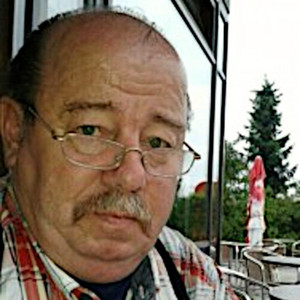Patients with a permanent tracheostomy tube can lead an essentially normal life. Jürgen Lippert, Vice President of the German Federal Association of Larynx Surgery Patients, who himself has a tracheostomy, shares his experience in an interview.

Jürgen Lippert: In May 2003 I had my larynx removed because of cancer. Since then, I have been living with a tracheostomy.
Jürgen Lippert: I first had to get used to the new situation after the operation. A tracheostomy requires a major adjustment and you need a lot of patience. Generally, it takes one to two years to get used to the new situation and to return to your usual quality of life. This is something I like to prepare patients and their family members for when I talk to them in my capacity as a patient advisor. I myself managed to adjust fairly quickly and was able to return to work within nine months of my surgery. But that’s not true for everyone.
A tracheostomy is an artificial opening of the trachea. It is indicated if a patient cannot breathe naturally anymore or if their breathing is laboured. This is because the upper airways or larynx is diseased. Common causes for this are (in alphabetical order):
A tracheostomy is when a surgeon gains access to the soft tissue of the throat by making an incision in the trachea. Then a plastic or metal tube (tracheal cannula) is inserted, which holds open the tracheostomy.
Jürgen Lippert: There are several restrictions as you can no longer breathe through your mouth and nose, but rather through the tracheostomy tube. You have to relearn a lot of things: speaking, smelling, tasting, swallowing – everything is different with a tracheostomy tube. But with time, you learn to live with it.
Jürgen Lippert: Yes, after the trachea has been removed and a permanent tracheostomy tube is fitted a range of therapies are required. First of all, you need support from the speech therapist to learn to swallow and speak again. Inhalation with a nebuliser is recommended to make it easier to cough up or suction away the secretions that accumulate in the tracheostomy tube.
The mucus has to be removed to make it easier to breathe and to ensure that no infections develop after the operation. After the operation I did inhalation therapy with a device for about half a year. Then I was able to stop the inhalation therapy because I have learnt to cough up the secretions from the tube without the inhalation or suction. But I know people where it has taken longer for them to get the mucus buildup better under control.
Jürgen Lippert: I inhaled a saline solution once or twice a day using a nebuliser. The inhalation therapy always took between 10 and 12 minutes. I used the nebuliser with a mask especially designed for tracheostomies. You put the mask over the tracheostomy on your throat and you breathe in the saline solution through that.
Jürgen Lippert: I tend not to. But when the weather is cold and damp, in autumn and winter, I notice that more mucus develops. That then means that I have to cough up secretions from the tracheostomy tube more often.
Jürgen Lippert is vice president of the Bundesverband der Kehlkopfoperierten e.V. (German Federal Association of Larynx Surgery Patients), president of the Landesverband der Kehlkopfoperierten Sachsen e.V (Regional Association of Larynx Surgery Patients) and head of the Landesverband Bayern (Regional Association of Bavaria). He has been living with a tracheostomy since 2003. As a patient advisor, he prepares others for life with a tracheostomy and supports them throughout the process.
The Bundesverband Kehlkopf- und Kopf-Hals-Tumore e. V. is a central contact point for patients who have undergone surgery to the larynx or who have had a laryngectomy, tracheostomy patients, patients with throat and laryngeal cancer and their relatives. It provides support, for instance, by putting patients in contact with specialist outpatient services and therapist and helps with social law issues.
Note: The statements made in the interview are individual assessments of a patient with medical expertise. They do not necessarily reflect the general state of science. In the same way, the described use of inhaled antibiotics does not necessarily correspond to the approval of inhaled antibiotics.
The PARI LC Sprint nebuliser is available with a mask or adapter for children and adults who have a tracheostomy. NaCl 0,9% or hypertonic saline solutions as 3% NaCl or 6% NaCl are suitable inhalation solutions.
An article written by the PARI BLOG editorial team.
© 2025 PARI GmbH Spezialisten für effektive Inhalation